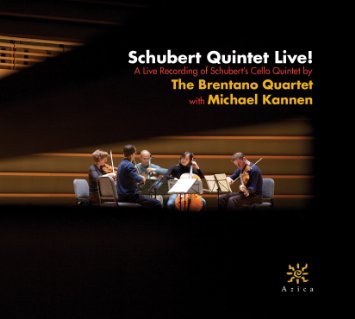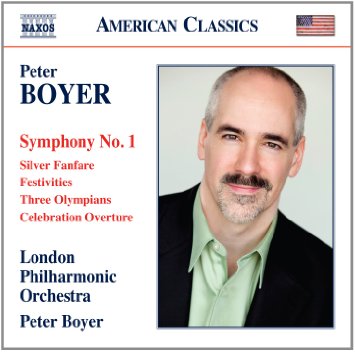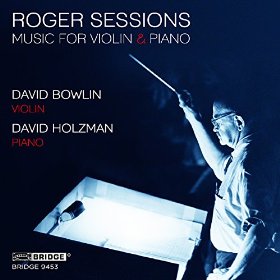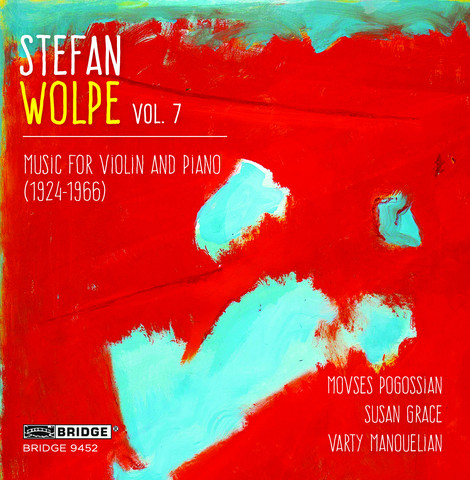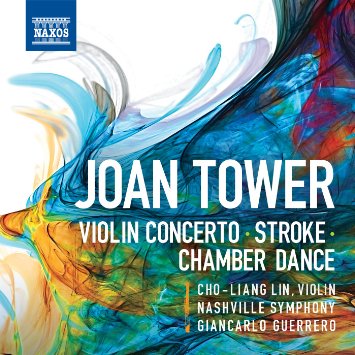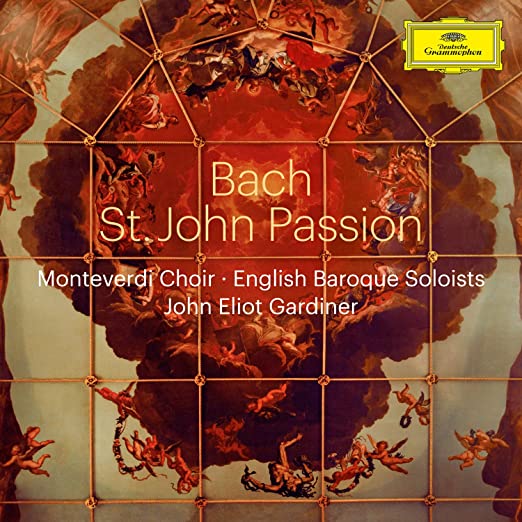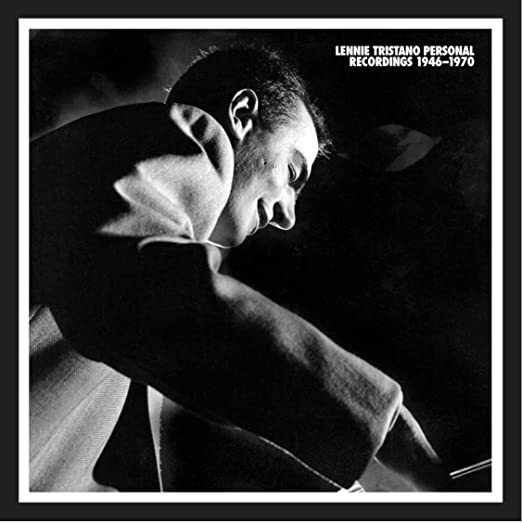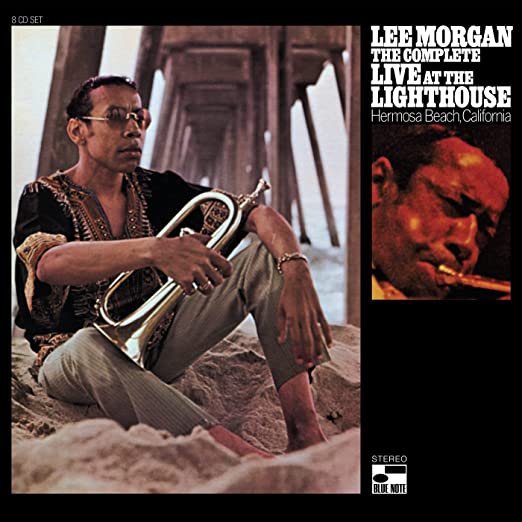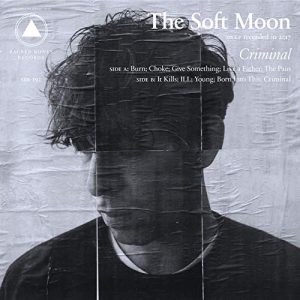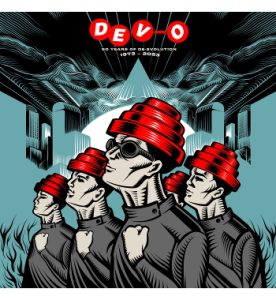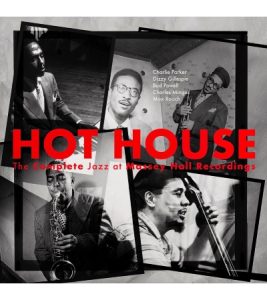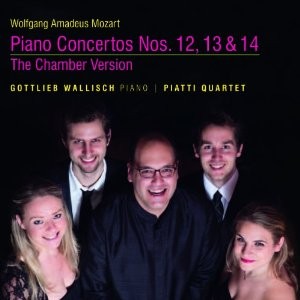Schubert Quintet LIve! A Live Recording of the Schubert's cello quintet by the Brentano Quartet with Michael Kammen. Azica Records. ACD 17304.
Whenever I forget what suavity is, I listen to the Brentano Quartet to remind myself. The Brentanos employ suavity to evoke the 'classic' quality of Mozart, Beethoven, and here, Schubert. They are not looking for a fresh perspective on its monumental character. Theirs is a conservative approach to performing this music and it works. It wouldn't work if they weren't a superb ensemble, which they are.
Once a year over the last decade or so they have been invited to Amherst College to perform in the 'fairest college's' music series, presumably because the music people at the college have decided the Brentanos represent the standard they want their students (the few that can find seats among the mostly elderly subscribers from the community like me) to hear. Usually visiting artists work with music students during their week here, so I suppose it comes out all right in the end.
In September, 2014, the Brentanos, joined by their former cellist, Michael Kannen, chose Amherst's Buckley Recital Hall as the venue in which to conduct their latest recording project, Schubert's D 956 String Quintet. We concert goers got to hear them play and record the work three times over a three-day period, if we chose. Leader Mark Sobel tells us in the album notes that the recording takes parts of all three sessions, aiming for a mix of their slightly different 'feels.' I heard two of the three.
Compared with other performances and recordings I've heard of the Quintet, this one feels tastefully more deliberate, letting notes and phrases move out into the hall without rushing their successors. This slightly darkens music that is already a shade dark—there's that second cello. They come in close to four minutes slower than the energetic Emerson Quartet, for example (DG), who are the opposite of suave. Four minutes is not a huge difference spread over a total of 57, but we can feel it. Their style, something that doesn't always show up in the numbers, is also more measured than inflected. The Diotoma Quartet (Naive) are only a minute faster than the Brentanos but their notably lighter style lets more light (sorry) into the proceedings: we hear more texture and it is a bit airier. The Bretanos' is the kind of performance that once in your head will tend to make lighter sounding, brisker, more inflected performances sound rushed, superficial even.
I have learned, primarily from listening to Alain Planès play the composers' piano sonatas (HM), that there is no definitive way to play Schubert. It's clear that the Brentanos admire Schubert enormously and aim to give the String Quintet all of the time and space it needs to show us what a major work it is.
Peter Boyer. Symphony No. 1. Silver Fanfare. Festivities, Three Olympians. Celebration Overture. London Philharmonic Orchestra, Peter Boyer. Naxos 8.559769.
Genre is important in the arts because it guides our expectations just as it guides artists' intentions and ambitions. American Peter Boyer (b. 1970) writes expressly and unashamedly celebratory, fanfare, festive music: music which, whether or not it does in fact, go with public occasions. Some music of this sort goes with films—we can feel the need in such music for the film. John Williams is probably the best composer of this kind of music and he has been deservedly appreciated and praised for it. We do not patronize composers of this kind of music because they are not writing 'higher' art. That would be misunderstanding their genre, bringing the wrong expectations to it. We are uplifted, saddened, militarized, etc. by it. That is what it is for. To be simple-minded about this, we do not criticize the best beer in the world for not being wine.
Peter Boyer writes music of this kind and based on the first four works on this album, I find him generally successful at it. He is not the melodic genius Williams is. We will not find this music swimming or pulsing through our heads a week after hearing it. But while it's going on, it works well enough. I can imagine it intensifying, even lifting the occasions associated with it.
While Boyer's Symphony No. 1, expressly dedicated to Leonard Bernstein, has many of the virtues of the composer's celebratory music, it clearly has 'higher' expectations and aspirations. But his music is what it is. Copland can move from the muse of celebration to the more sophisticated muse of art music. Bernstein, following directly in his footsteps, can do it with more versatility if less richness and eloquence, with the exception of the show music of Candide and West Side Story, which is uniquely brilliant. But it's a challenging move to make for a lesser composer. The composer must know, feel, and execute the differences involved, know how to separate the muses. Alas, Boyer can't quite pull that off, though his third and final movement strikes me as full of promise. Faint praise, I know. The music of his symphony is attractive, especially the eleven-minute Adagio that concludes it. This music pulls free to some extent, pointing toward a musical world not dependent on either an occasion or a narrative that needs its harmonic enrichment to embellish its tale. It is suggestive of some of the lyrical music of West Side Story and Candide, but it really does have some life of its own. This is the Peter Boyer I heard on WFCR FM radio that led me to this album. If he can write like this...
Roger Sessions, Music for Violin and Piano. David Bowlin, violin. David Holzman, piano. Bridge Records. 9453.
Roger Sessions (1896-1985) is considered by many to be a dean of the first generation American modernism referred to by its European counterpart, neo-classicism. This is the American music of the 1940's and 1950's that gave birth to the more radical modernism of Babbit, Wolpe, Carter, Rochberg, Wurorinen. It is a 'school' of American music that many casual followers of classical music aren't familiar with, perhaps because they prefer its neo-romantic alternative or perhaps because it is derivative of and less brilliant than the European modernism of the same period. But I have grown fond of it over the years and am happy to blow its horn. It has its own appeal, especially for Americans who may, as in the music of Charles Ives, feel a western hemisphere pulse at work beneath its sophisticated European style.
To begin with, who could have the audacity to write a half-hour Sonata for Solo Violin? I went directly to this 1953 work to see if such a thing could possibly sustain our interest. It does. God bless Bridge Records (of New Rochelle, NY) for taking on such a project, along with their Wolpe project. To wit:
Stefan Wolpe, Vol. 7. Music for Violin and Piano. 1924-1966. Movses Pogossian, violin. Varty Manouelian, violin. Susan Grace, piano. Bridge 9452.
Stefan Wolpe (1902-1972) was born in Germany and came to the U.S. in 1938 at the age of 36. We can hear that in the greater abstraction in his music. No western hemisphere undertones here. To my ears his music is the equivalent of abstract expressionist painting at its best. Meaning, we have very few bearings but stretches of inexplicably moving sound. Splashes of brilliant color crossed by lines and other geometric figures, lyric phrases moving in out of each other—which all add up to a successfully strange harmonious whole. If you like modernism its antic, quixotic, eloquent best, Wolpe should be one of your people.
Joan Tower. Violin Concerto. Stroke. Chamber Dance. Cho-Liang Lin, violin. Nashville Symphony Orchestra, Giancarlo Guerrero, conductor. Naxos 8.559775.
Refreshing, lively, supremely good natured (not at all superficial), American to the core Joan Tower (b. 1938) reminds us of no one else. Her musical roots are invisible, at least to me. She has managed to step free of both American neo-romanticism and the analytic quality of neo-classicism and the abstraction of its successors. Oh, modern music is all there—she has not grown up in a cultural vacuum. There is nothing alien or hermetic about her work. But it has its own life as very little music of her contemporaries does. She exudes great lyric robust energy.
And then, as in the solo passage in the middle of the single movement Violin Concerto, she modulates into an almost private beauty for a few moments—and we are...pleased. No other word for it.
When ungifted composers strike out on their own as she clearly has done, the results are frequently irresolute and ultimately boring. All we hear is a wish to escape, not to arrive anywhere. Another way to describe adolescence. That's what makes Tower so rare.
All three works on this recording are world premieres. They are brilliantly performed and the recording's technical quality is wonderful. When I lived in Nashville in the late 1960's, the Nashville Symphony Orchestra was little more than an enthusiastic community institution. Here in 2015 under conductor Guerrero, they are superb.
Equipment used for this audition: Resolution Audio Cantata CD player; Blue Circle BC 107 solid state preamplifier & NSL 28 watt solid state amplifier, JM Reynaud Offrande Supreme, V2 loudspeakers; Crimson interconnects and speaker cable; and Volex power cables.
Bob Neill, a former equipment reviewer for Enjoy the Music and Positive Feedback, is proprietor of Amherst Audio in Western Massachusetts which sells equipment from Audio Note (UK), Blue Circle (Canada), Crimson (UK), Jean Marie Reynaud (France), Resolution Audio (US), and Tocaro (Germany).




